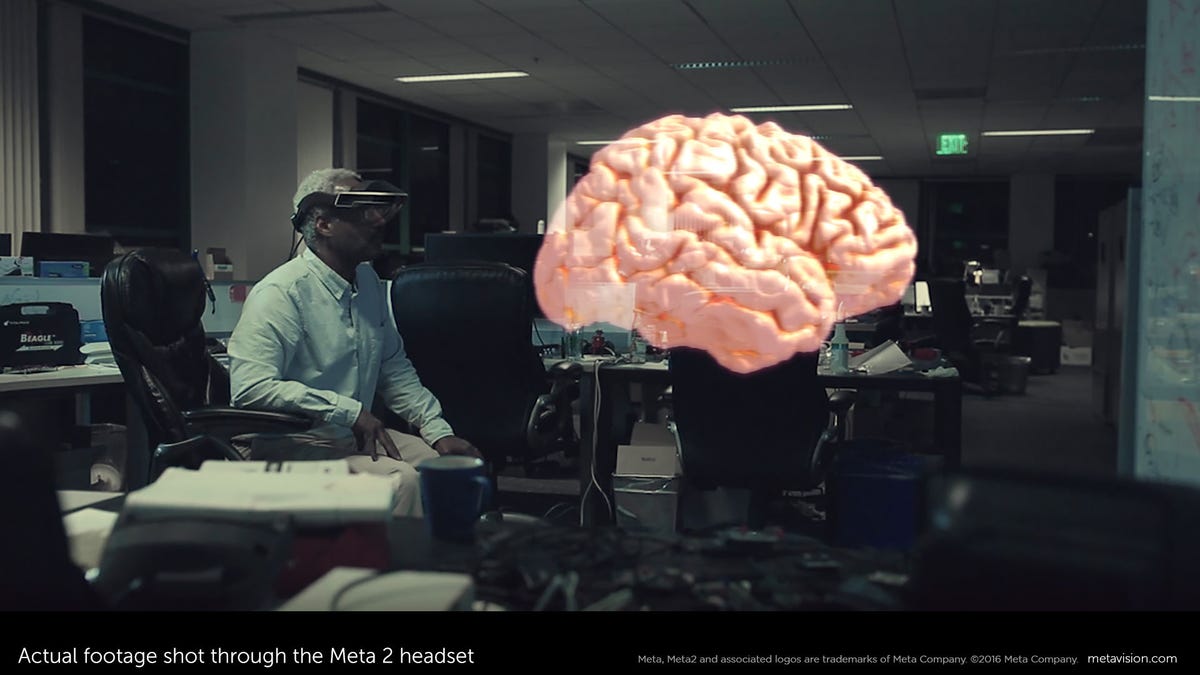Meta 2 AR glasses available for pre-order for $949, promise wider field of view than Microsoft HoloLens
How many AR/VR headsets can people handle?

This has been a big week for pre-ordering AR and VR headsets. After HTC and Microsoft announced a one-two punch on Monday with both Vive and HoloLens pre-orders going live, lesser-known Meta has thrown its Meta 2 augmented reality development kit in the mix.
The Meta 2 dev kit is now available for pre-order for $949 (which converts to roughly $1,300 and £675), less than a third of what Microsoft HoloLens' dev kit costs. But it won't be shipping until the third quarter of this year, months after the HoloLens. Augmented reality headsets like these overlay images and object on top of your actual field of vision -- different to virtual reality headsets, which transport you to different worlds altogether.
The Meta 2 promises a 90 degree field of view for its semi-transparent AR glasses, which is wider than the HoloLens'. This is still below VR headsets such as the Vive, which has a field of view of around 110 degrees. The Meta 2's projected display has a 2560x1440 resolution.
It's also a tethered headset, requiring a Windows 8 or 10 PC to be connected to run (with Mac support on its way in the future). HoloLens, by comparison, is its own wireless system capable of running apps independent from a PC. Meta 2 will also allow motion control with your hands thanks to position-tracking sensors and a HD 1,280x720-pixel front-facing camera.
Meta's vision of what working in AR with Meta 2 is like.
The Meta 2 development hardware headset has 4 speakers built in, and apps can be built using the popular Unity 3D graphics engine. Meta 2 intends to use its AR powers to create a futuristic version of a computer desktop interface, something that those who have received early demos (Robert Scoble included) seem bullish about in the headset's hype video.
I've never used Meta 2 glasses, but we'll hopefully get a chance soon enough (CNET looked at the first generation of Meta years ago). I've found myself underwhelmed by most AR headsets compared to what VR offers right now. There's going to be a limit, however, on how many high-end VR and AR headsets developers -- or anyone else -- can afford.

